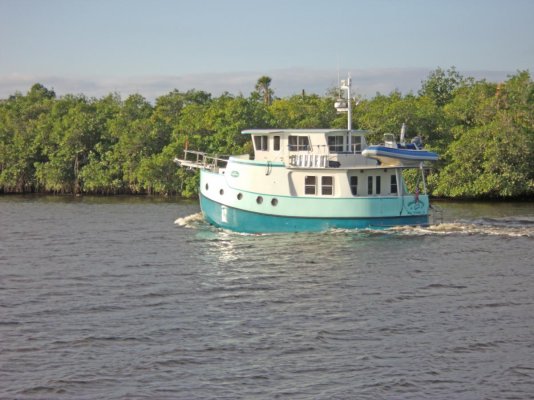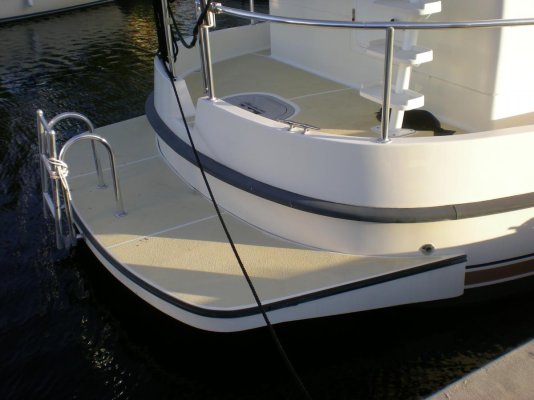Smaller Vessels & Shallow Draft
...lets get this discussion back to the subject of alternative vessels rather other alternative investments...the man wants to go boating I believe
I thought I would present the case for smaller vessels, and shallow draft vessels.
1) First off I would lead you to vessel of less than 60 feet. I think you should consider a vessel size that you can fairly quickly become acquainted with handling yourself. This will inspire your self-confidence to go exploring on your own (you and your wife), without feeling the absolute need for a third party captain. You can take your friends out for an afternoon or weekend cruise without feeling the need for an operator. (I once worked for an owner who specifically ask that I take vacation off the vessel when he came to spend time on the vessel with his wife).
2) As you are brand new to boating I would NOT suggest any sail power, although you may come to appreciate it in the future once you experience it on someone else's vessel.
3) I would NOT suggest a new-build (custom project) until you've had a chance to experience some portion of your dream afloat and can make a more informed decision as to your likes/dislikes.
4) I would suggest a nice stable vessel, with a nice house size galley, and a comfortable bathroom (head as it is known). These features are very important for the liveaboard aspect, and they are VERY important for the lady (I'm assuming you really do want to make this dream last for at least 5 years...smile)
5) I would suggest a vessel with shallow draft and well protected props and shaft systems. The protected props and shafts will save you a lot of heartache and money when you make those few mistakes that many new boaters (and a few older ones as well) make on occasions.
I can't emphasis SHALLOW DRAFT enough. Here I am defining shallow draft as 4 feet or less. The Chesapeake Bay (America's largest inland water bay) has a few navigable deep water channels, but the vast majority of its area is 4.5 feet of water or less on average. If you truly want to explore the Chesapeake Bay and its many tributaries (one of the truly great cruising areas), you better have a shallow draft vessel. Ditto for the Outer Banks of NC (I once did them in a 37 foot sailing cat that I could kick up its CB's and rudders to draft only 24 inches). Its nice to have a shallow draft for the Florida keys, and the 10,000 island area of SW Florida, and those inside waterway passages of the west coast of Florida. Gunkholing is so much fun, and you miss some of this fun when your vessel draws too much water....you end up passing many delightful spots for fear of running aground.
If you are intending to do the east coast, then around Florida, you might well consider doing the popular
'Great Loop', up the Mississippi, to the Great Lakes, down the Erie Canal, etc.
And don't forget the Bahamas that whole chain of islands is structured on a shallow ocean shelf that is a delight to go cruising across rather than around, especially with those crystal clear waters. Shallow draft is king!
I started out to write this posting and make a suggestion of a few possible smaller vessels that I had recently become aware of...several of them being production mono-hull (edit added: Great Harbor Trawlers) But as I read my own words, I can't help but think of this wonderful vessel I just spent a few days aboard in Palm Beach. It was recently grabbed up (purchased) by a good friend of mine for his own liveaboard & treasure hunting purposes, so it is not available. I'll present a few details and photos as an example of what I consider a really nice liveaboard cruising vessel that is not too audacious while accomplishing most of what you have in mind plus a few extras...great dive and explore boat.
YachtForums.Com - View Single Post - New to Yachting; 13 Million to spend -





